Ancient Encounters
Bibi Ka Maqbara Aurangabad India
Mother Masala Tours
An Edifice of Testament of Respect
Bibi Ka Maqbara Aurangabad India. Known as the “Taj of the Deccan,” stands proudly in Aurangabad, Maharashtra. It was commissioned by Azam Shah, the son of Aurangzeb, in the year 1660 CE to honor his mother, Dilras Banu Begum. The mausoleum symbolizes the profound love and respect Azam held for his mother. The construction of the structure began shortly after her death and reflects the Mughal architectural style inherited from the Taj Mahal. With significant historical importance that continues to draw people from near and far. Today, the estimated population of Aurangabad is about 1.2 million, a city that thrives on its rich history, where countless stories of love, loss, and legacy intertwine.
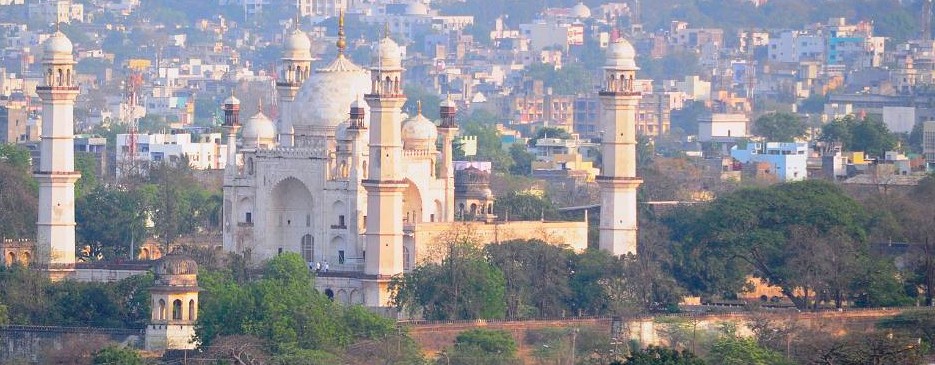
Bibi Ka Maqbara Aurangabad India: Timeless Artifacts
The intricate inlay work, primarily made from semi-precious stones like lapis lazuli, agate, and jasper, forms beautiful floral patterns that adorn the walls, enhancing the beauty of the place. Each design has a story, often linked to Persian traditions, showcasing the artistry of the craftsmen who worked on the mausoleum. The surroundings of the structure consist of lush gardens designed in a Persian style, with pathways leading to various points of interest. The garden layout follows an ancient pattern believed to symbolize paradise, making it a sacred space where visitors can reflect in peace.
Ancient Mosaics: Impeccable Craftsmanship
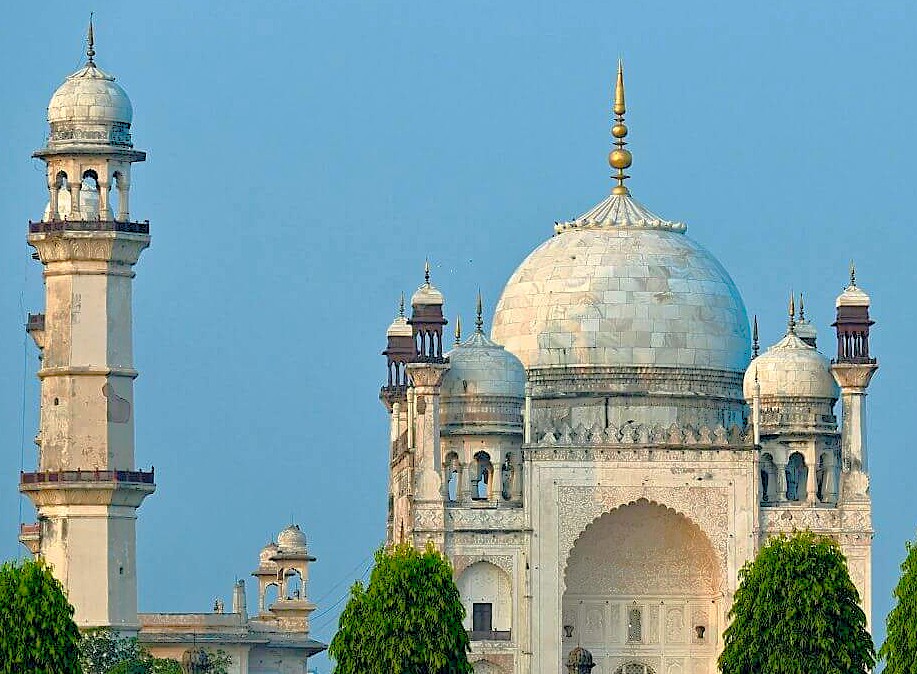
A beautiful representation of the artistry prevalent during the Mughal era, this landmark is a must-see. The details on its marble surfaces display a harmonious blend of symbolism and techniques derived from various cultural influences. Craftsmen employed timeless methods that included delicate carving, intricate geometric patterns, and exquisite inlay work, resulting in an edifice that captivates thousands of admirers each year from around the world. The outer walls are adorned with floral motifs and calligraphy that includes verses from the Quran, adding a spiritual depth to the magnificence of the stunning structure.
A Culinary Journey: Savor the Flavour
Bibi Ka Maqbara Aurangabad India. The cuisine in Aurangabad features special dishes that reflect its rich cultural heritage. One highly regarded dish is the Naan Qaliya, a delectable preparation made with tender pieces of marinated meat, typically mutton or chicken, cooked in a rich, aromatic gravy. It is often accompanied by naan or rice, making it a fulfilling meal that highlights the local flavors. Another specialty is Puran Poli, a sweet flatbread stuffed with a mix of jaggery and split chickpeas.
The Pulse of the Local Community
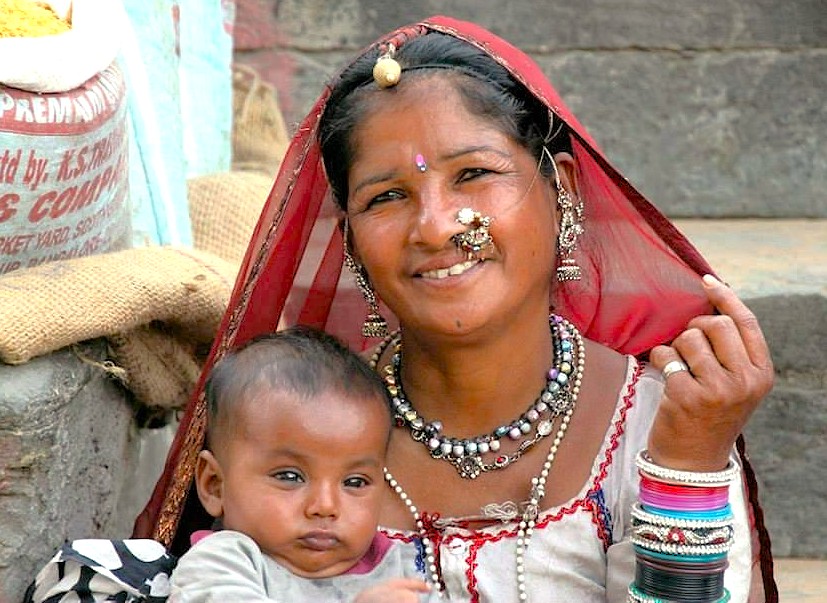
Bibi Ka Maqbara Aurangabad India. The community surrounding Bibi Ka Maqbara in Aurangabad reflects a unique blend of cultural and historical identity, deeply connected to landmarks like the nearby Ellora and Ajanta Caves. The residents are known for their genuine hospitality and warmth, making those who come to explore the city feel truly welcomed and at ease. This friendly attitude contributes to a peaceful and engaging atmosphere, encouraging meaningful interactions and connections with the rich history embedded in the city's fabric. Locals take immense pride in their heritage.
Capturing the Magic: A Photographic Have
The Artistry of Devotion, the opportunities for photography abound. The stunning dome and minarets reflect the architectural elegance that we find intriquing, especially during the golden hour when the evening sun casts beautiful shadows and light on the structure. The meticulously maintained gardens provide a picturesque backdrop, perfect for capturing moments that express the peaceful ambience of the space. We can find unique angles to shoot the intricate inlay work and floral designs, allowing us to bring home stunning images that tell the story of this majestic mausoleum.
Festivals of Devotion: Honouring the Sacred and the Divine
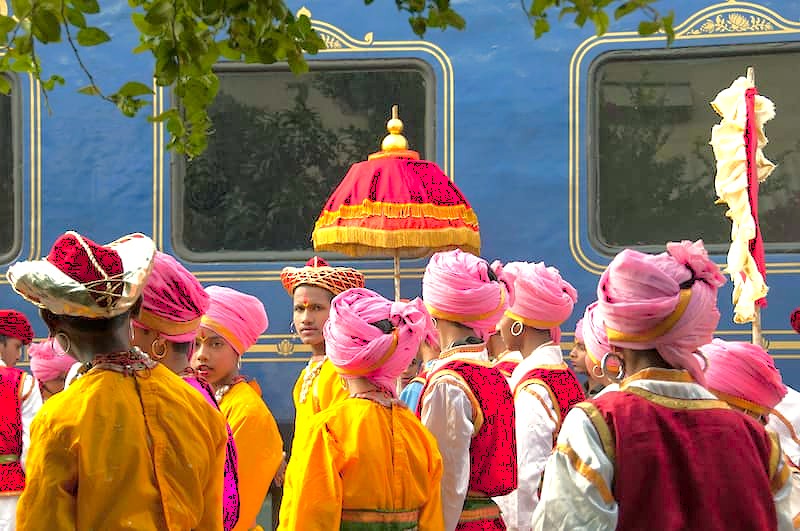
Bibi Ka Maqbara becomes a focal point during various festivals that connect the community to its cultural and religious roots. One major event is Ramadan, a month of fasting observed by Muslims. During this period, the mausoleum sees increased footfall as people come to offer prayers and reflect upon their spirituality. Another important annual event is the Gudi Padwa, celebrated as the Marathi New Year. The mausoleum often becomes a serene setting for those seeking blessings and peace to commence the year’s new beginning.
The Connection with the Gods
The connection to divinity is palpable, where various deities and figures from both Islamic and Hindu traditions are revered. For Muslims, figures like Hazrat Khwaja Moinuddin Chishti, known for his message of love and compassion, hold significant importance. His teachings resonate through the prayers offered at the mausoleum, reinforcing its role as a sacred space. Hindu beliefs also intertwine with the spiritual atmosphere, as many locals honor deities such as Shiva and Goddess Durga at nearby temples. The site becomes a place where prayers and gratitude converge, creating a space where individuals from different faiths can express their devotion.
Urban Legends: Strange Sightings, Myths and Mysteries
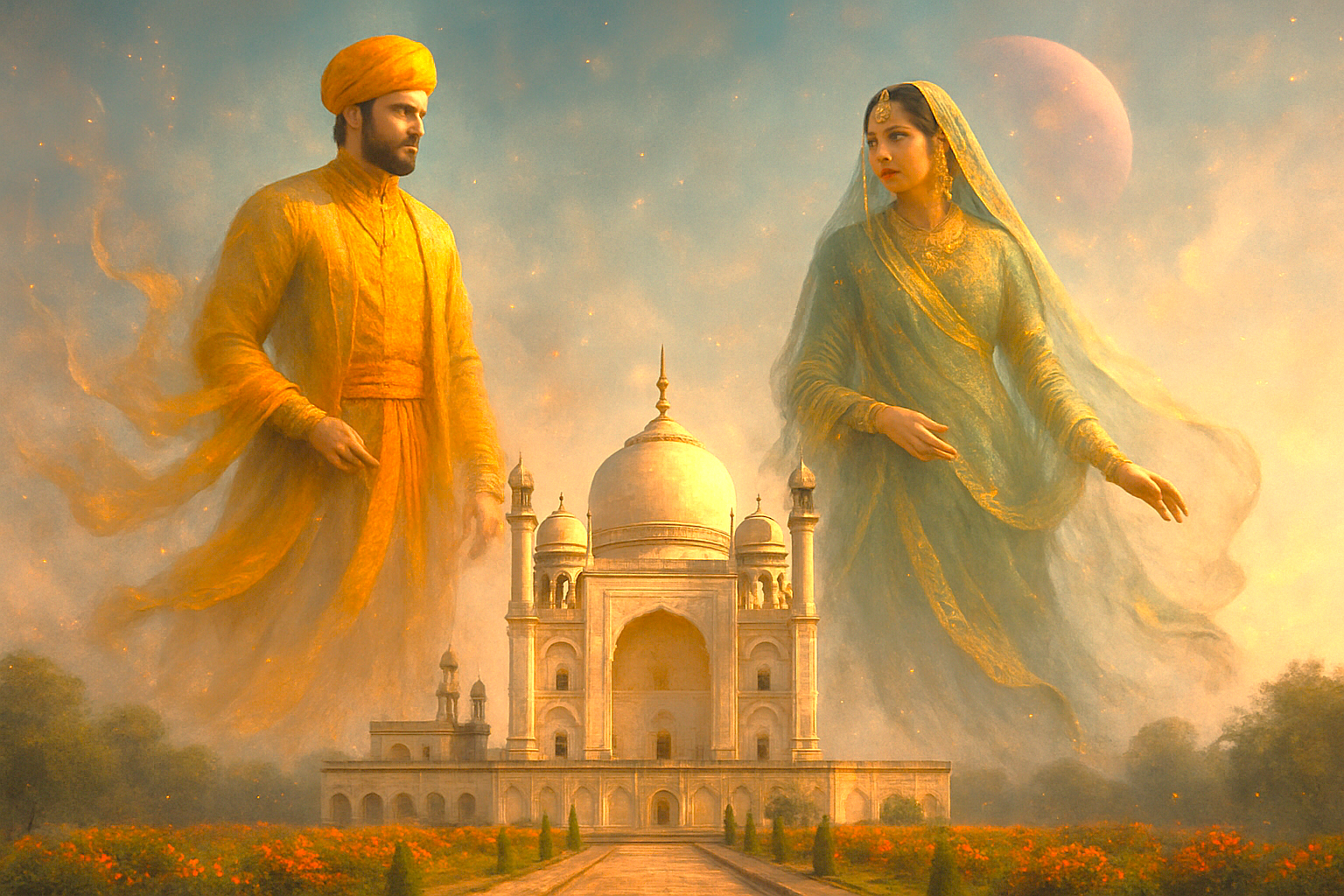
Bibi Ka Maqbara Aurangabad India. Steeped in local legends and tales that enhance its allure. One legend tells of the spirits of Azam Shah and Dilras Banu Begum watching over the mausoleum, believed to linger within its premises as protectors of love and memory. Some locals sense a feeling of tranquility or whispers in the wind, especially during quieter hours. Another involves the mysterious lights seen around the gardens at night - as the souls of past artisans illuminating their work. These stories are deeply rooted in the beliefs and enhance the mystical atmosphere surrounding this structure.
Ancient Technologies: Sacred Sound, Geometry & Astrological Influences
This design incorporates mathematical ratios and proportions that align with astrological influences, fostering harmony within the structure. The construction materials, predominantly marble, contribute to its spiritual significance. Marble offers a sense of purity and elegance, resonating with the aesthetic and spiritual ideals of the Mughal era. Acoustic properties are also noteworthy - the dimensions of the dome create an environment where sound travels uniquely, often used for chanting and prayers. Solefeggio frequencies associated with the structure may align with 396 Hz, which is deemed to liberate feelings of fear and guilt, enhancing the meditative experience for those present.
Serendipitous Meetings: Beyond the Main Path
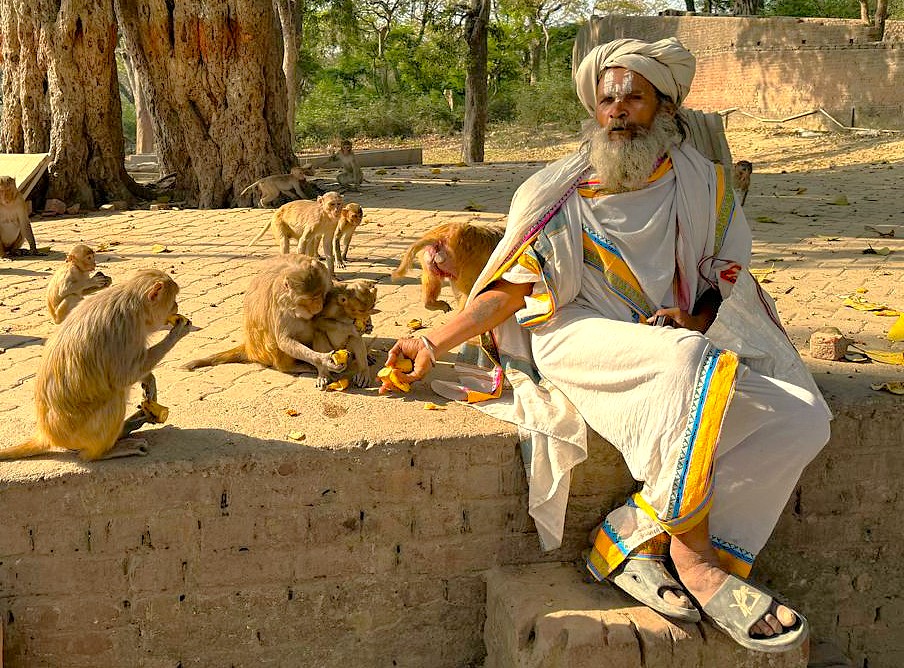
As we explore the surroundings, we find unique local artisans and small workshops that reflect the continuing traditions of the region. For instance, wandering through the bustling markets nearby, we can find craftsmen engaged in creating Bidriware, a traditional metal inlay art that originates from this part of India. Additionally, there are small textile shops specializing in Paithani sarees, known for their intricate designs and vibrant colors. Observing artisans meticulously working on their craft offers a glimpse into the dedication and skill that keep these cultural practices alive.
Resilience and Renewal: Overcoming Adversity’s Challenges
Bibi Ka Maqbara has witnessed the resilience of Aurangabad’s community through various historical challenges. One notable event is the great fire of 1984, which caused extensive damage to the structure. The local government and community rallied together to fund restoration efforts, demonstrating incredible determination to preserve their cultural heritage. Another historical challenge occurred during the Maratha Wars in the late 17th century, when battles raged in the region, posing threats to the safety of the mausoleum.
Pack Your Bags - Your Invitation Awaits, Let’s Go
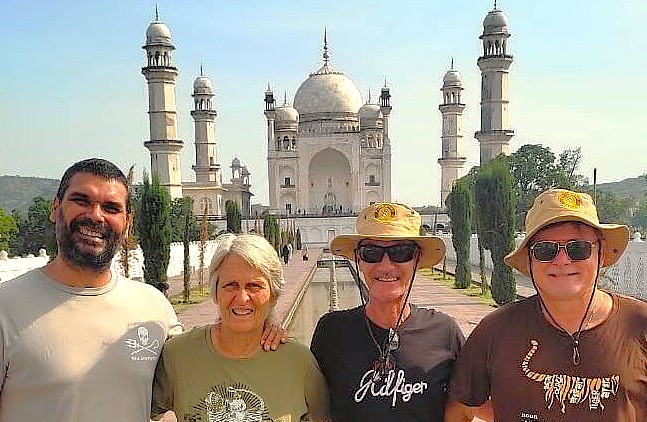
We invite you to join us on an enriching journey to Bibi Ka Maqbara Aurangabad, and its surrounding areas. We will uncover the stories embedded within the walls of this historic mausoleum while diving into the cultural traditions that define the spirit of Aurangabad. As we walk through gardens, taste local delicacies, and engage with artisans, you will have the opportunity to immerse yourself in the rich narrative of this enchanting site. Join us as we experience the cultural tapestry woven by history, spirituality, and community, creating cherished memories that last a lifetime.
Symphony of Generosity: Offerings from Wanderers to Residents
The dialogue between local residents and those who come to explore Bibi Ka Maqbara enhances the cultural fabric of the area. This interchange fosters a sense of community where locals share their crafts and stories, while guests express appreciation for the heritage and traditions that define this part of India. Through engaging with artisans, tasting local delicacies, and participating in festivals, visitors contribute to the economy and cultural preservation efforts within the community. This mutual respect enhances the experience for both groups, creating a peaceful and harmonious atmosphere.